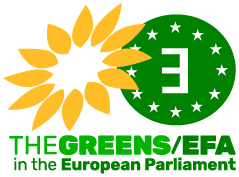Brussels, the 22nd of April 2013
Dear Commissioner Borg,
As you know, on the 14th of March the European Parliament adopted by a large majority an initiative report asking the EU to act to reduce exposure to endocrine disrupting chemicals, for humans but also for wildlife. This report aims to identify the way forward on how we should handle the issue of endocrine-disrupting chemicals.
It also takes the view that the criteria for defining endocrine disrupters should be horizontal, based on criteria for defining ‘adverse effect’ and ‘endocrine mode of action’, in a hazard assessment perspective. More generally, the EP calls for legislative action to be taken quickly to protect human health, especially in vulnerable groups such as pregnant women and infants.
This report is a highly topical one, as the European Commission is currently revising its strategy on endocrine disruption. On the 20th of March, under a mandate from DG SANCO, the European Food Safety Authority (EFSA) published a scientific opinion in the framework of the revision of the Commission’s strategy on endocrine disruption (1).
A week later, the Joint Research Center (JRC) issued its own report on the same topic (2). In these reports, which will serve as a base for the Commission in the revision of its strategy on endocrine disrupters, EFSA and the JRC propose a set of criteria to define substances that are active on the hormonal system, as well as to define the ones that are disrupting this system.
To date, we do already know enough to regulate these substances in accordance with the precautionary principle. France has banned the use of the endocrine disruptor Bisphenol A (BPA) in all food contact materials as of 2015. Last year, Denmark announced that four phthalates (DEHP, DBP, DIBP and BBP) would no longer be allowed in shower curtains, table cloths and other consumer goods as they are endocrine disruptors. Another molecule, the diethylstilbestrol (DES), also known as Distilbene, was taken off the French market in 1977.
To avoid adopting criteria that are later found out to be inappropriate or too narrow, we consider it important that a short reality check is made of the likely future criteria before their adoption (« stress test »). We therefore urge you to check whether the envisaged criteria and tests methods to determine endocrine disrupters would identify certain substances that are already known to have endocrine disruptive action, such as BPA, DES and parabens.
Moreover, it has been demonstrated that the period of exposure is of extreme importance as well as the combination of exposures to different substances: all possible exposures – starting from in utero – should be taken into account and addressed. For that purpose, it is necessary that we have appropriate testing, with sensitive enough tests that are able to detect endocrine disrupting properties. We urgently need appropriate tests for expending diseases like breast, testicular, prostate cancers and endometriosis. This is why it is of utmost importance that funds are made available to support development of test methods both as a research and under OECD.
We call on the Commission to invest into research to ensure that we have adequate understanding of the toxicity allowing us to regulate on non-animal tests. Testing on animals being already no longer authorised on the European market for cosmetics, what is the Commission’s strategy in developing alternative and adequate tests other than in vivo ones and with what timetable?
All our trade partners in the world are watching what our position will be: this revision of the European strategy is an historic opportunity for us to show the path to a safer and healthier world with the highest standards possible for the current and future generations. The European Union opened the way with REACH, it has now the responsibility to continue. We hope that the Commission will be able to answer this request rapidly.
Yours sincerely,
Michèle Rivasi MEP (Greens/EFA)
Åsa Westlund MEP (S&D)
Carl Schlyter MEP (Greens/EFA)
Corinne Lepage MEP (ALDE)
Christa Klaß MEP (EPP)
Alda Sousa MEP (GUE/NGL)
Oreste Rossi MEP (EFD)
Copy letter to Commissioner Geoghegan-Quinn and to Commissioner Potočnik
(1) « The hazard assessment of endocrine disruptors: Scientific criteria for identification of endocrine disruptors and appropriateness of existing test methods for assessing effects mediated by these substances on human health and the environment »
(2) « Key scientific issues relevant to the identification and characterisation of endocrine disrupting substances »
[facebook_ilike]Articles similaires :
- Lettre au Commissaire européen à la santé sur les critères de définition des perturbateurs endocriniens
- Lettre au Président de la Commission européenne Barroso sur les perturbateurs endocriniens
- Perturbateurs endocriniens: lettre à la Commission sur l’évaluation de 700 substances chimiques
- Gouvernance et propriété intellectuelle au sein de l’Initiative Médecine innovante 2 (IMI2)


